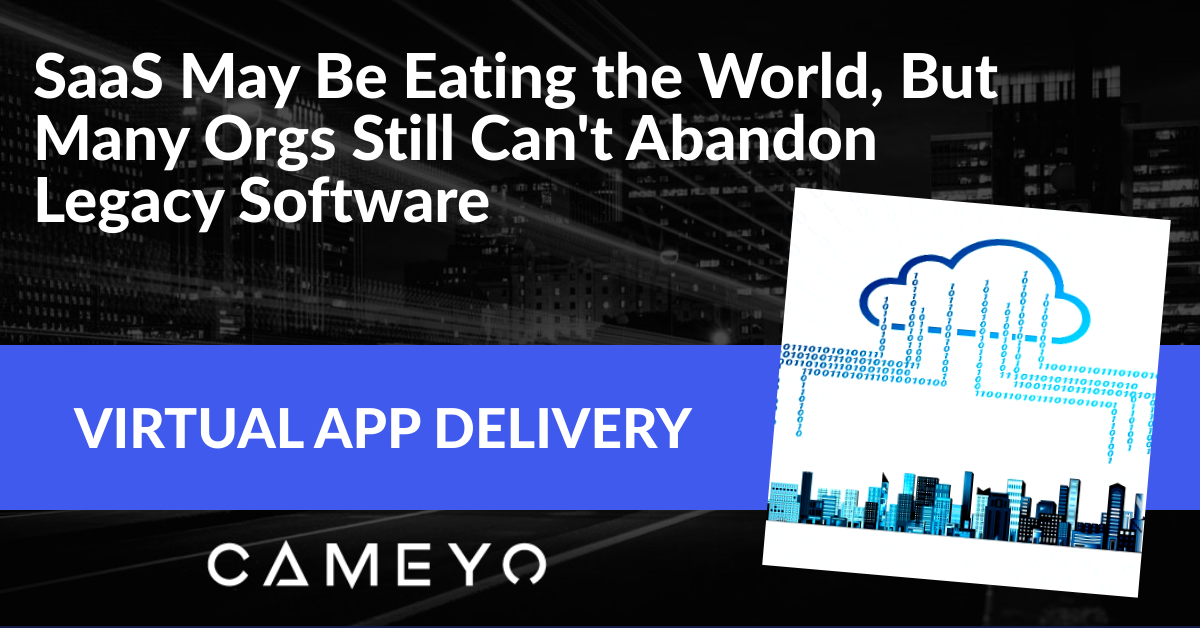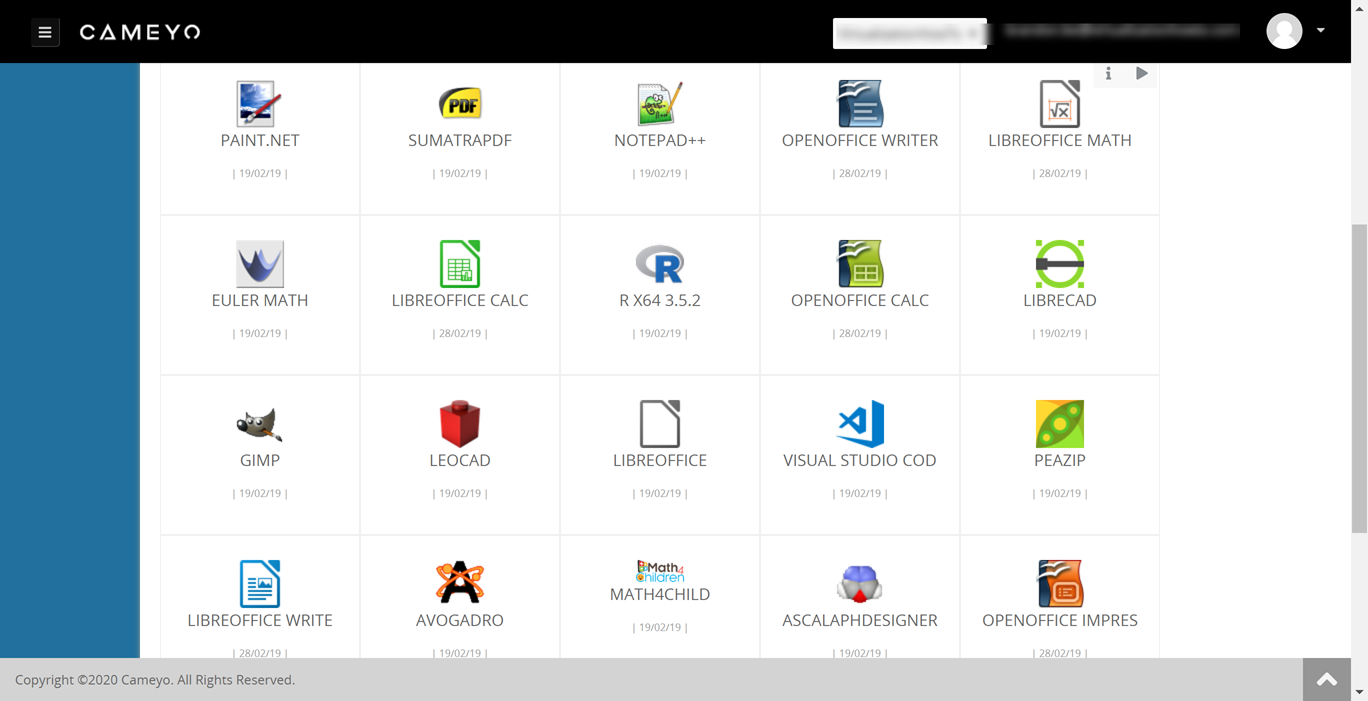Since the beginning of the cloud revolution over the past decade, businesses worldwide have contemplated the best path for the technology driving their business. For the past several years, vendors, resellers, and solutions providers have touted the cloud as the “end all be all” for solving modern technology challenges. However, many organizations have invested fortunes to customize and develop legacy on-premises applications to fit their business and customers’ needs. 
For businesses currently using highly customized traditional applications, it would seem these are at an impasse with going “all in” on the cloud. So, why can’t organizations just abandon all that highly customized legacy software and utilize a web-based/Software as a Service (SaaS) version instead? Or is there a hybrid approach that makes sense? And if so, are there technologies that help bridge the gap between legacy applications and the cloud?
Why organizations can’t just abandon their customized legacy software
Many enterprise businesses have been using “snowflake” configurations of highly customized legacy applications, including ERP, CRM, EHR, and others, for years now. Why can’t these organizations simply abandon their highly customized legacy applications in lieu of a shiny new cloud variant by way of a SaaS offering? There are a few reasons to note.
- They have significantly invested in the solution
- It is business-critical
- Current software works well for the business
Let’s see how each of these may keep businesses from abandoning their custom solutions for cloud SaaS offerings.
1. They have significantly invested in the solution
Many businesses may have started with an “out-of-the-box” legacy software package that provided most of the functionality needed to run their business. However, as their business grew and the needs and functionality requirements changed, they may have customized the software to fit their specific needs. This overall process may have taken years to achieve a highly optimized and customized set of workflows. Additionally, organizations may have spent millions in developer time over the years to customize, add, and modify legacy software to meet their expectations and provide the capabilities needed.
In many cases this includes adding functionality to the software, extending its features, and integrating it with other systems required for data and other services. Again, this may represent a considerable amount of capital investment and time to achieve a fully-featured software package that meets the business’s needs.
Even with the impressive set of out-of-the-box features provided with many cloud SaaS offerings from various software vendors, default functionality may be a far cry from what is needed by the business. Generally speaking, customers cannot customize cloud SaaS software offerings in the same manner as traditional on-premises applications. Typically with cloud SaaS, companies cater to the software’s capabilities, not the other way around. Asking businesses to leave behind the customizations and features that currently run their business to only “hope for the best” and accept default functionality and features does not bode well with many.
2. It is business-critical
Highly customized, legacy applications are often the pillar of the company and serve many business-critical functions. Legacy applications seen in the banking industry are a classic example of highly customized, legacy applications still heavily used. Legacy banking systems have operated for more than 30 years now, with over $2 trillion in assets flowing through these each day. It would be an understatement to say that a forklift upgrade of these financially critical systems would be risky and complicated.
It helps to illustrate that many of the highly customized legacy applications in use by businesses today provide the core functions, integrations, and workflows of the entire company. Moving the whole business-critical software stack to the cloud is no easy undertaking and is fraught with potential obstacles for most organizations. The message often heard in the industry to “move to the cloud, and all problems will be solved” is naïve and unrealistic.
3. The current software simply works well for the business
Many organizations struggle with the prospect of migrating business-critical software functionality to cloud SaaS environments simply because using their existing custom legacy software on-premises just works for them. While cloud-based applications are extremely powerful and provide many incredible features and capabilities, customized legacy applications may cater to the business’s individual needs and deliver benefits beyond those realized with cloud-based software replacements. Basically, it comes down to: “If it ain’t broke, don’t fix it.”
Software vendors often drive the push to the cloud
While there may be legitimate reasons for organizations to look to software based in the cloud, software vendors are increasingly the ones leading the charge when it comes to encouraging organizations to move their applications to the cloud. SAP recently announced that customers would need to drop customizations and migrate their services to the cloud to follow a significant initiative to migrate its existing customer base to its SAP cloud platform. For many customers, this will undoubtedly require a substantial refactoring of business processes and workflows due to losing very intricately and highly customized SAP software applications currently used on-premises.
As another example, Atlassian recently announced that on February 2, 2021, they would end the sale of new licensing for the on-premises server variants of their software and would be ceasing feature development for the server lineup. According to Atlassian, this is to streamline their focus on delivering the latest software that meets regulatory, security, and other requirements moving forward.
While the cloud can provide tremendous benefits for software vendors and their customers, this is not always the case. It helps to see that it is often not the customers driving the shift to cloud services and applications but rather software vendors.
A hybrid approach to legacy applications and cloud
Organizations may find it challenging to deliver an effective digital workspace to end-users and customers alike. They may currently be happy with their highly customized legacy application’s capabilities, workflows, and integrations. However, cloud SaaS may seem like the only viable solution to provide anywhere, any time access to business-critical applications. Is there a way that organizations can have the best of both worlds? Can they retain highly customized legacy applications in which they have made significant investments and still “breathe” cloud accessibility into these?
Cameyo is empowering businesses to do just that. It allows organizations who are using highly customized legacy applications to be able to continue using these to carry out business-critical operations while at the same time providing a modern application delivery vehicle to deliver the application with a cloud SaaS feel.
Using Cameyo, businesses can allow end-users to access any legacy application through a modern web browser connection. This means legacy applications not designed to run on mobile devices or other current end-user clients can efficiently run in a modern web browser session. It effectively delivers the “cloud feel” for business-critical applications without refactoring or redeveloping the application.
Cameyo also helps secure access to legacy applications with cutting-edge security capabilities delivered as part of the Cameyo solution. Most legacy applications are accessed by equally legacy remote access platforms riddled with security vulnerabilities and other security concerns. Cameyo provides a “zero-trust” environment for delivering remote applications. An end-user only has access to published applications when they have successfully authenticated. It dramatically reduces the chance of brute force attacks, zero-day vulnerabilities, or other security concerns with legacy applications.
Cameyo also provides organizations with the ability to create a modern digital workspace, even with legacy applications. It eliminates network challenges, device compatibility issues, and security concerns as part of legacy applications’ delivery.
 Cameyo digital workspace with published apps
Cameyo digital workspace with published apps
Concluding Thoughts
Many organizations today are still using highly customized legacy applications. They have invested significant resources into applications that are still providing core business-critical functionality for their business and may still do this well. While cloud environments offer robust features and capabilities in general, companies may not be in a position to abandon their legacy applications as the effort to migrate to new cloud SaaS offerings is too great.
Cameyo provides organizations with the tools needed for a hybrid approach to delivering legacy applications without refactoring or abandoning the platform. It provides the easy ability to provide access to any legacy application using a modern web browser connection. By leveraging Cameyo, businesses can have the best of both worlds. They can retain access to highly customized legacy applications and leverage a modern digital workspace for end-users.
Want to see Cameyo in action for yourself? Sign up for a free trial and you can be up and running in minutes, or you can request a customized demo once you’ve started your trial.
